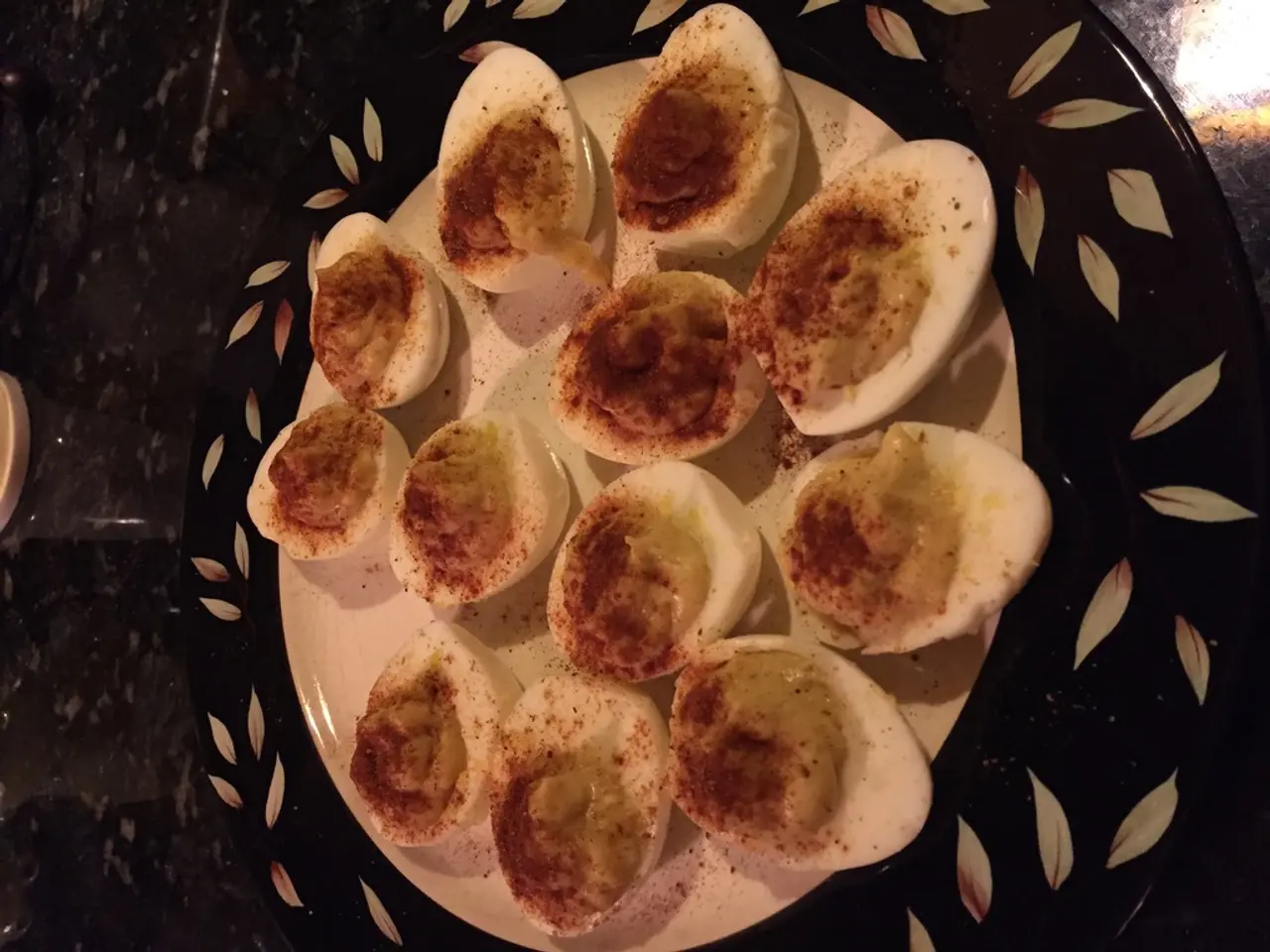Method for Creating Naturally Colored Easter Eggs
In the spirit of sustainable living and creative pursuits, we present a guide to creating natural egg dyes using everyday ingredients. From the vibrant earthy red-brown of onion skin dye to the stunning deep blue of purple cabbage dye, these eco-friendly methods provide a fun and engaging activity for both children and adults alike.
To begin your dyeing adventure, gather your chosen ingredients: purple cabbage, beets, cranberries, turmeric, blueberries, chili powder, red onion skins, and vinegar. Follow these simple steps to create your dye baths:
- Chop or roughly break your chosen ingredient (e.g., chopped purple cabbage, sliced beets, cranberries, etc.).
- Place the ingredient in a pot and cover with water.
- Bring to a boil, then simmer for about 30 minutes to extract the color.
- Strain out the solids and let the dye liquid cool.
- Stir in about 1 tablespoon of white vinegar per cup of dye. The vinegar helps the dye adhere to the eggshell.
- Place hard-boiled white eggs gently in the dye bath.
- Let the eggs soak for several hours or overnight for deeper, more vibrant colors.
Color results from different ingredients are as follows: - Purple cabbage yields blue to purple shades. - Beets and cranberries produce pink to red colors. - Turmeric gives vibrant yellow. - Blueberries offer medium blue tones. - Red onion skins give reddish to violet hues. - Chili powder may impart subtle reddish tones, though less commonly used for dyeing eggs.
Each egg dyed using this method is a unique work of art, with its own distinct finish and pattern. The unpredictability of nature's palette adds to the charm of this eco-friendly approach.
Here are some specific dye recipes to get you started:
- To make purple cabbage dye, chop 2 cups of purple cabbage, boil it with 2 cups of water, simmer for 10 minutes, strain the liquid, add 2 tablespoons of white distilled vinegar, let it cool, and then immerse hard-boiled eggs.
- Purple cabbage dye results in a stunning deep blue color on the eggs.
- To make cranberry dye, bring 2 cups of fresh or frozen cranberries to a boil, simmer for 10 minutes, strain the liquid, add 2 tablespoons of white distilled vinegar, and let the dye cool before immersing hard-boiled eggs for at least 3 hours. Cranberry dye results in a stunning marble-like finish on eggs.
- To make blueberry dye, pour 2 cups of fresh or frozen blueberries into a pot, bring to a boil, simmer for 10 minutes, strain the liquid, add 2 tablespoons of white distilled vinegar, and let the dye cool before immersing hard-boiled eggs for at least 3 hours. Using natural dyes results in unique, one-of-a-kind eggs with varying depth and pattern.
- To make onion skin dye, combine 2 cups of dried red onion skins with 2 cups of water, bring to a boil, simmer for 10 minutes, strain the liquid, add 2 tablespoons of white distilled vinegar, and let the dye cool before immersing hard-boiled eggs for at least 3 hours.
- To make beetroot dye, chop 2 cups of beets, boil them with 2 cups of water, simmer for 10 minutes, strain the liquid, add 2 tablespoons of white distilled vinegar, and immerse hard-boiled eggs in the dye bath for 3 hours to an entire day, depending on the desired shade of pink.
- To make turmeric dye, combine 2 tablespoons of turmeric with 2 cups of water, bring to a boil, simmer for 10 minutes, strain the liquid, add 2 tablespoons of white distilled vinegar, and let the dye cool before immersing hard-boiled eggs for at least 3 hours.
- To make chili powder dye, mix 2 tablespoons of chili powder with 2 cups of water, bring to a boil, simmer for 10 minutes, strain the liquid, add 2 tablespoons of white distilled vinegar, and let the dye cool before immersing hard-boiled eggs for at least 3 hours.
Remember to refrigerate the dye baths while the eggs soak to ensure food safety. Happy dyeing, and enjoy your one-of-a-kind, naturally dyed eggs!
Delve into the realm of cooking and lifestyle as you embark on a home-and-garden project that involves food-and-drink ingredients. Follow these recipes to create natural egg dyes using onion skin, beets, cranberries, turmeric, blueberries, chili powder, and purple cabbage. By incorporating these ingredients into your dye baths, you'll create a beautiful assortment of vibrant and unique Easter eggs. From the deep blue hues of purple cabbage dye to the elegant pink of beetroot dye, these sustainable dyeing methods offer a fun and creative activity for all ages.




